The Ionian scale, also known as the major scale, is the foundation of many popular tracks across various genres.
It contains seven notes and follows a specific pattern of whole and half steps, giving it a bright and uplifting sound (we’ll break it down a little later).
As a producer, using the Ionian scale can completely transform the way you approach melodies and harmonies 一 allowing you to create tracks that flow naturally.
Plus, it helps you build strong chord progressions and melodies that really stand out over the competition, like a boss.
That’s why we’re breaking down everything you need to know about the Ionian scale, like:
- Structure of the Ionian scale/major scale in western music ✓
- How to play the Ionian scale on MIDI controllers ✓
- Using the Ionian scale in chord progressions ✓
- Building triads and extended chords ✓
- Creative approaches to writing melodies and harmonies ✓
- Advanced tips for modulating between modes & other scales ✓
- Enhancing your sound design with Ionian-based melodies ✓
- Examples of modulation techniques ✓
- Creating smooth harmonies with extended chords ✓
- Much more about the Ionian scale/Ionian mode ✓
After this article, you’ll know everything about the Ionian scale so you’ll have a solid understanding of how to use it in your own tracks.
This way, you’ll be able to build better melodies, create harmonies that flow, and transition between modes like a boss.
Plus, you’ll be equipped with advanced tips and tricks to elevate your sound design and keep your songs fresh and exciting.
Your tracks will always feel polished and professional, whether you’re producing pop hooks or experimenting with EDM.
So, let’s dive in…
Table of Contents
The Ionian Scale: Breaking it Down
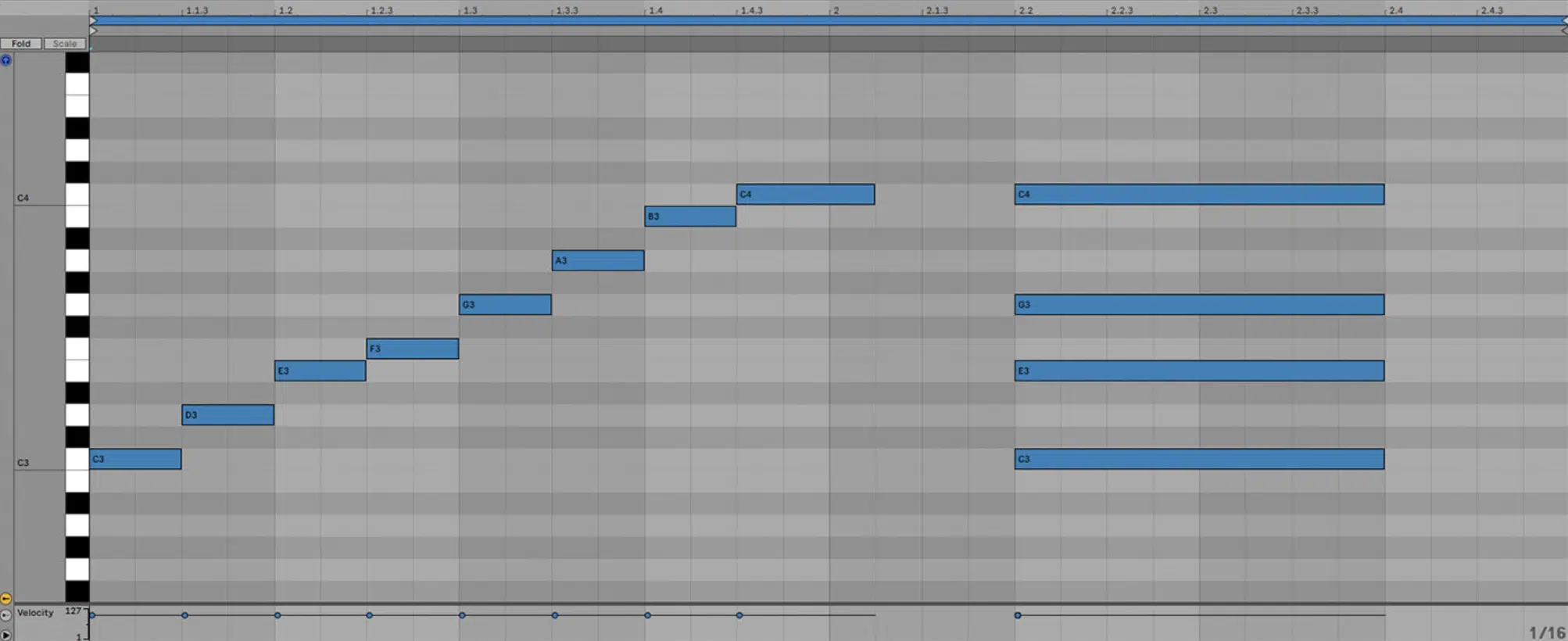
The Ionian scale, often referred to as the major scale, is the foundation of many popular music styles, consisting of seven notes: C-D-E-F-G-A-B in the key of C.
These notes follow a pattern of whole and half steps. Each of these notes has a specific position within the scale, called a scale degree.
For example, in the C Ionian scale, C is the first degree (the root note), D is the second degree, and so on, until you reach the seventh degree (B).
Which, of course, resolves back to the root note in the next octave.
Understanding scale degrees is essential for building chords and creating harmonic progressions, as each degree provides a different level of tension or resolution in your music, so let’s break it down a little further.
The Structure of the Ionian Scale

The Ionian scale follows a precise pattern of whole and half steps as we just mentioned, giving it its unique character.
To break it down, the Ionian mode uses the formula:
- Whole step
- Whole step
- Half step
- Whole step
- Whole step
- Whole step
- Half step
In the key of C, the scale looks like this: C-D-E-F-G-A-B, which repeats in the next octave.
Each note in the Ionian scale corresponds to a specific scale degree, which makes this mode ideal for building major chords and melodic lines.
As the first mode in the diatonic modes, the Ionian mode provides a bright, uplifting sound, unlike minor modes like the Aeolian mode, which have a more melancholic feel.
How to Play the Ionian Scale on MIDI Controllers
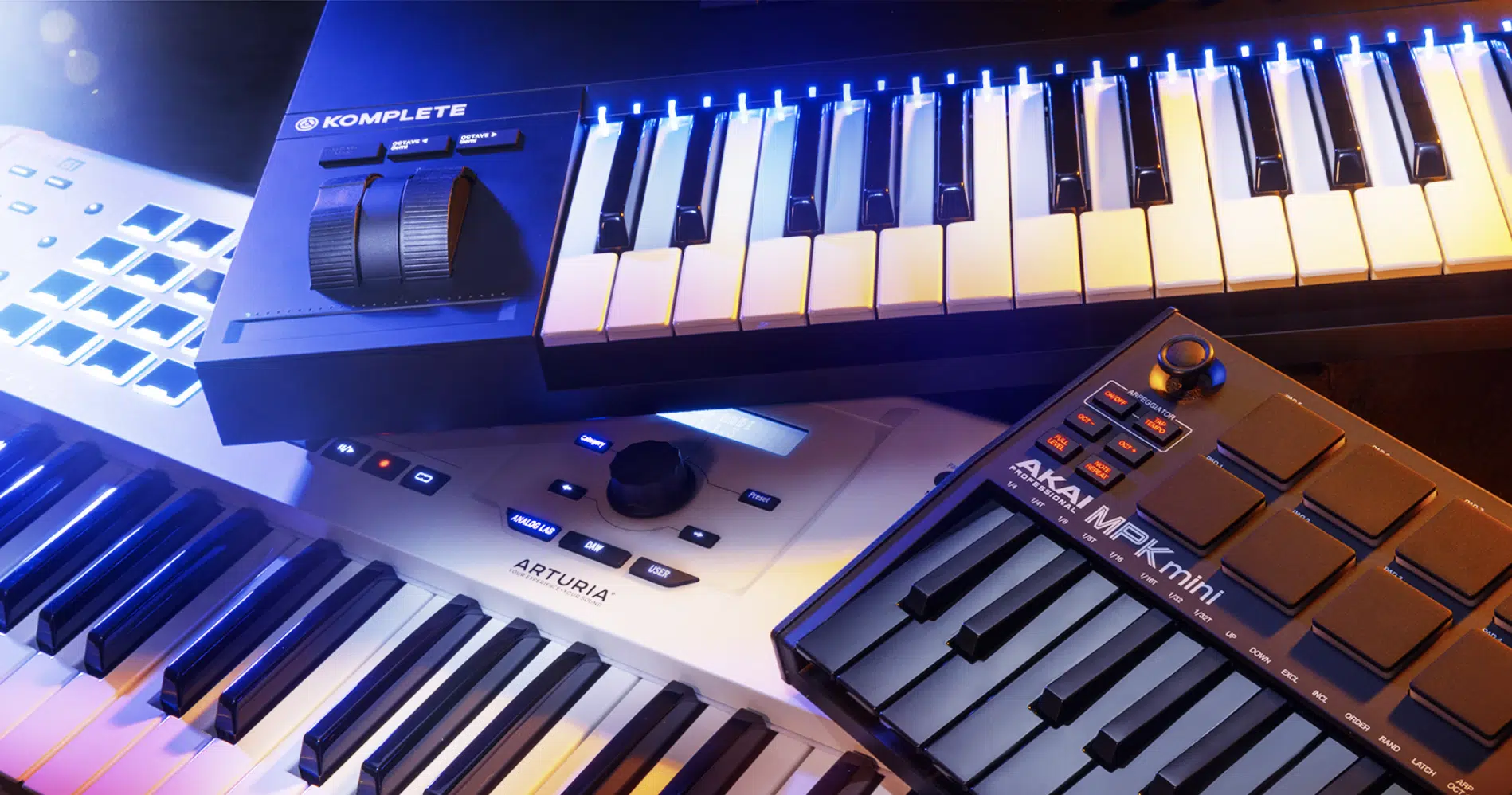
If you’re using a MIDI controller, playing the Ionian scale is straightforward; in the key of C, map out the notes C-D-E-F-G-A-B across your MIDI pads or keys.
You can start by assigning each note to a different pad or key. For example, assign C to Pad 1, D to Pad 2, and so on, up to B.
You can visualize these seven notes on your controller, with the root note starting on C, and play them in sequence to hear the bright, major sound of the Ionian mode.
The versatility of MIDI controllers allows you to experiment with different scales like the Ionian scale quickly (and using MIDI mapping) you can easily transpose the Ionian mode to other keys, like G or D.
For example you can loop the Ionian scale across octaves…
This means you can duplicate this mapping for higher or lower registers 一 making it easy to create layered melodies and harmonies.
Using the controller’s pitch or transpose functions, you can quickly shift this Ionian scale to other keys like G or D without having to remap the pads.
For example, if you’ve mapped C Ionian, simply transpose up by two semitones to play the D Ionian mode.
Whether you’re creating melodies or harmonies, mastering the Ionian scale on a MIDI controller gives you full control over your sound.
This way, you can smoothly transition between different modes with no problem.
Using the Ionian Scale in Chord Progressions
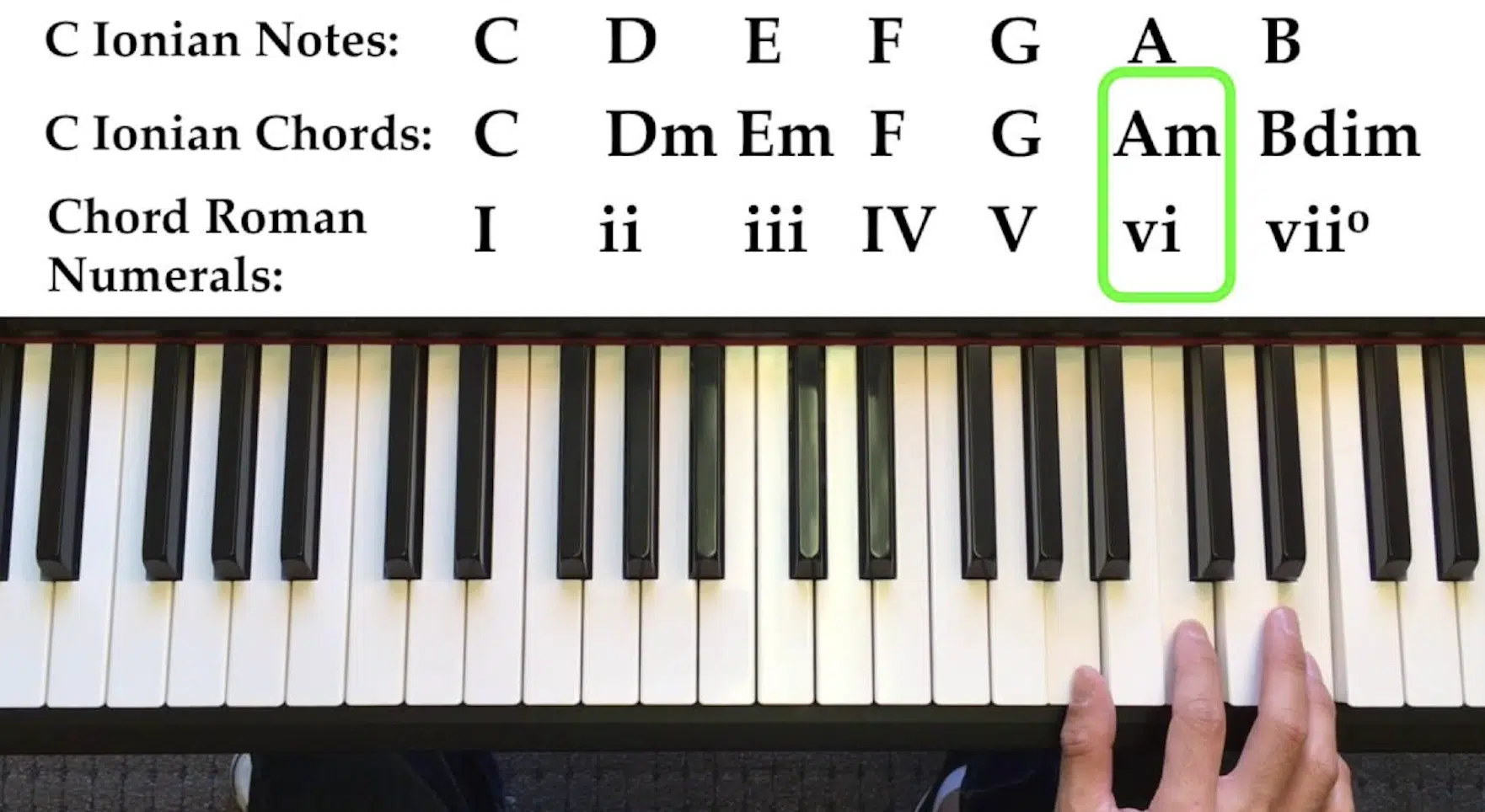
Incorporating the Ionian scale into your chord progressions adds a bright, uplifting quality to your tracks.
Start by building triads from each of the seven notes in the Ionian mode.
For example, in the key of C, the first chord you’ll play is:
- C major (C-E-G)
- Followed by D minor (D-F-A)
- E minor (E-G-B)
- Etc.
These chords work together to create killer chord progressions that flow naturally because of the predictable pattern of the Ionian scale.
Producers like yourself can also build extended chords, like Cmaj7 (C-E-G-B), to add even more depth to your arrangements.
-
Building Triads and Extended Chords from the Ionian Scale
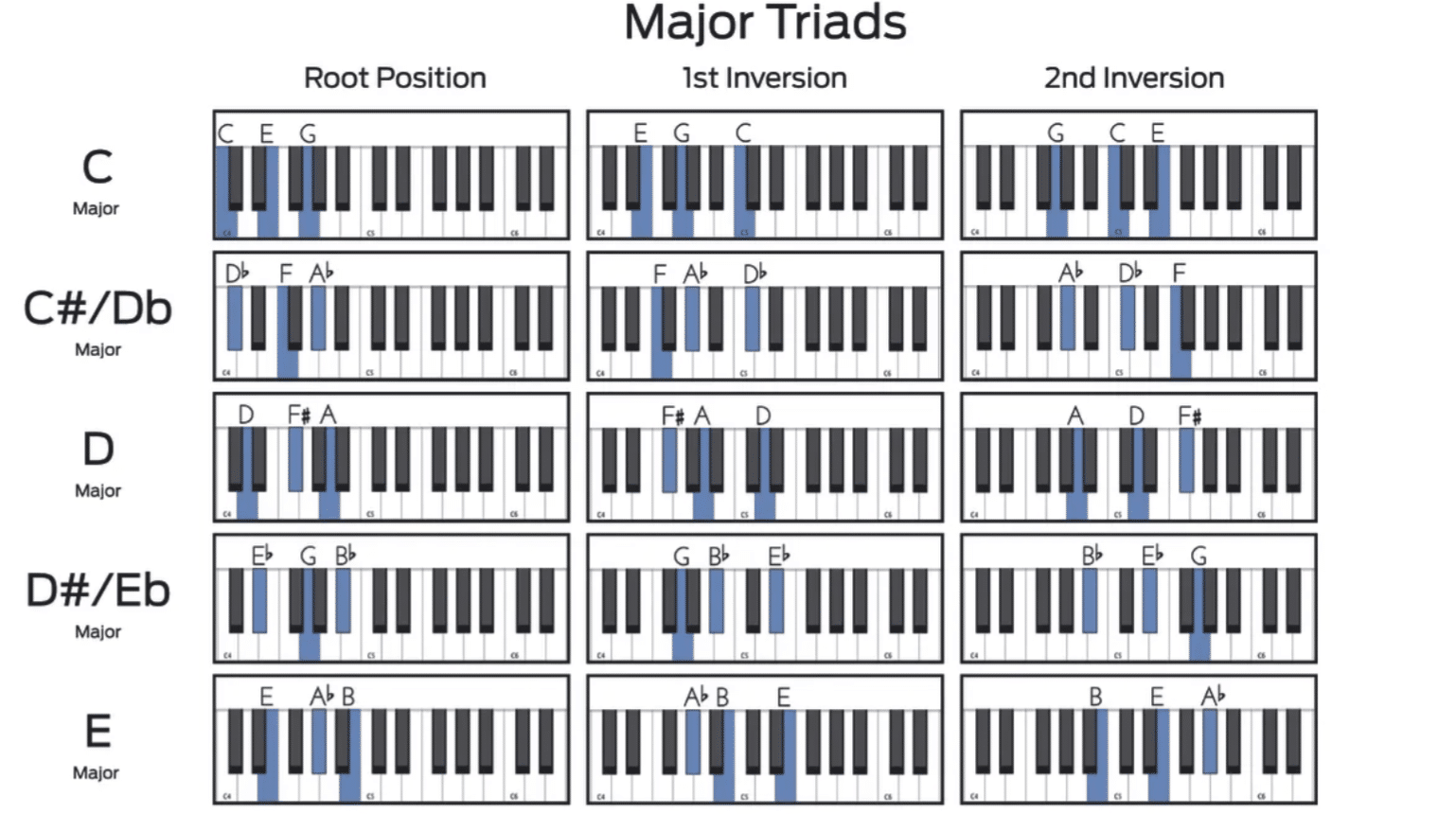
Building triads from the Ionian scale is super beneficial when it comes to creating strong harmonic foundations.
In the key of C Ionian (C-D-E-F-G-A-B), the first triad you’ll create is C major (C-E-G), which serves as your tonic, or root note.
As you move through the scale, you’ll construct D minor (D-F-A), E minor (E-G-B), and so on 一 following the natural scale degrees of the Ionian mode.
If you want to add more depth, extend these chords by adding the seventh degree of the scale, like Cmaj7 (C-E-G-B), which gives you a richer sound, perfect for genres like pop or EDM.
-
Creative Ways for Writing Melodies & Harmonies
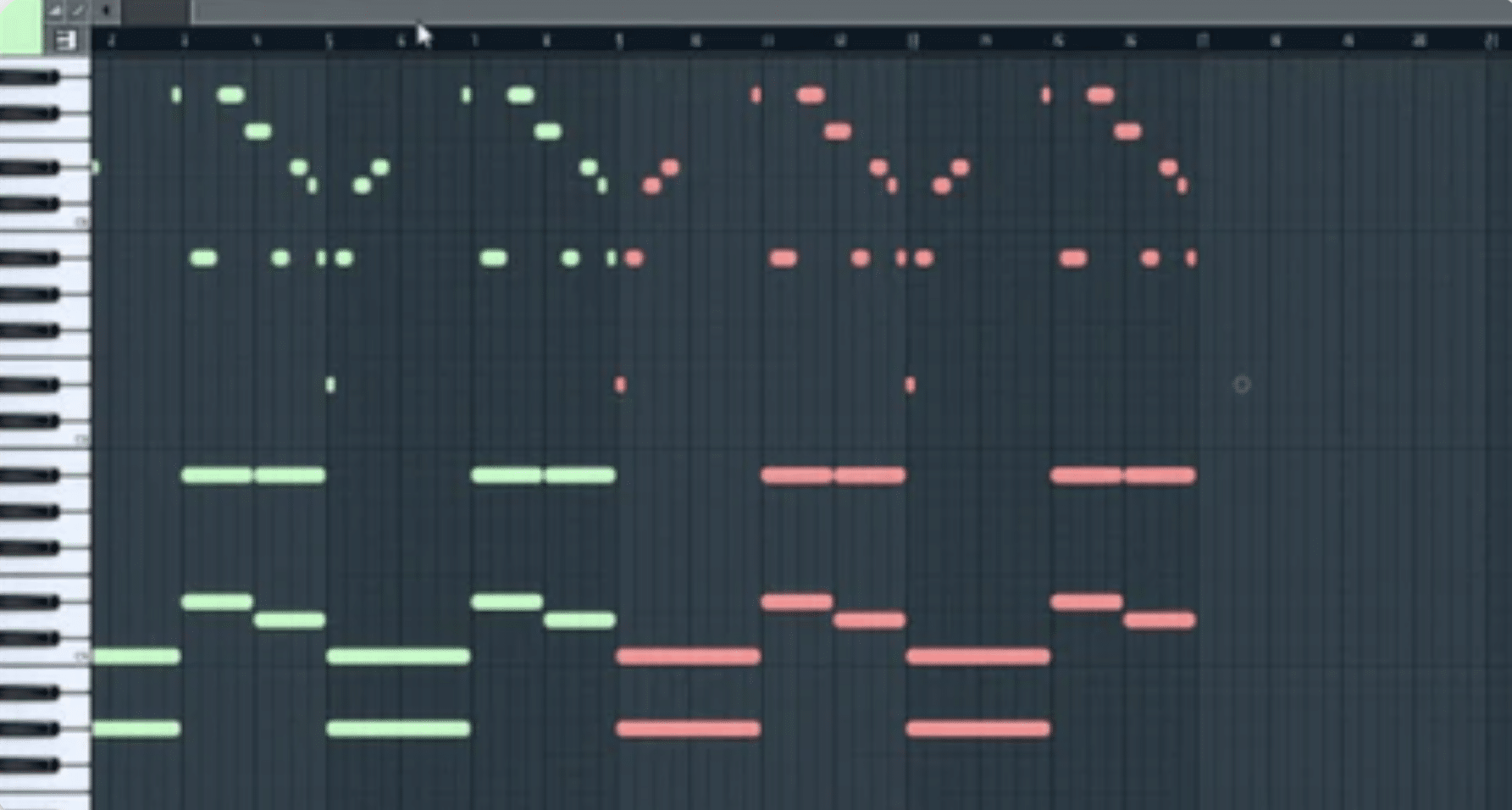
Drill Melodies
To write melodies using the Ionian scale, start by highlighting key scale degrees like the root note and the fifth note as we discussed.
For example, in the key of C, a melody could start on C, move to E (the third scale degree), and resolve on G (the fifth scale degree).
This creates a simple but super solid/strong melodic line.
When it comes to harmonies, you can certainly play around and stack thirds or fifths.
Take a melody based on C-D-E, then harmonize it by adding notes a third mode up: E-F-G (this creates a much fuller sound).
If you want a brighter tone, layer octaves of these notes or experiment with inversions of the chords built from the Ionian scale.
This technique works especially well in genres like pop and EDM, where catchy, melodic hooks are key.
Advanced Tips for Experimenting with the Ionian Scale
Once you’ve mastered the basics of the Ionian scale, it’s time to explore more advanced techniques. Experimenting with modulation and sound design using the Ionian mode will open up creative possibilities in your tracks.
-
Modulating from Ionian to Other Modes
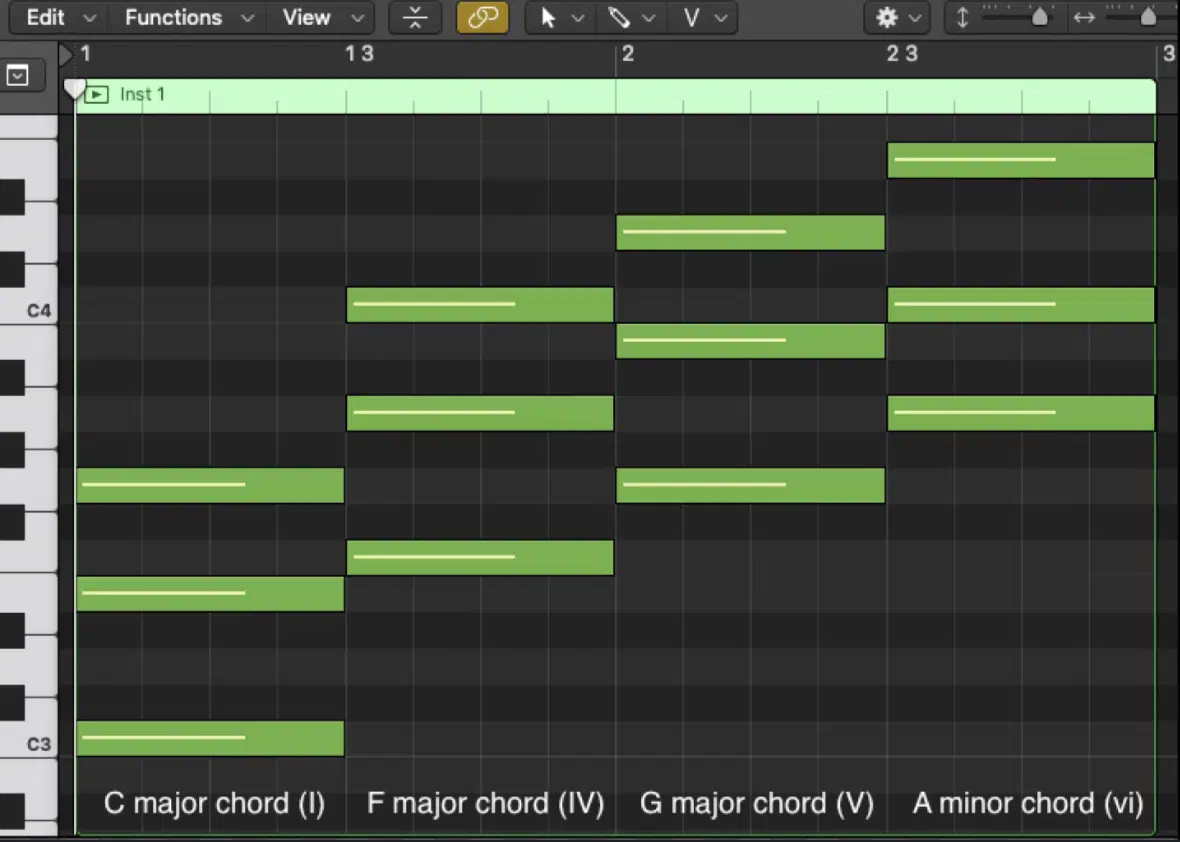
Modulating from the Ionian scale to other modes can give your track a dynamic shift.
For example, you can start a melody in the C Ionian scale/major scale (C-D-E-F-G-A-B) and modulate to the Aeolian mode (also called the minor mode) by lowering the following degrees of the scale:
- Third
- Sixth
- Seventh
This transforms your melody from major to minor.
Try moving from Ionian to Mixolydian by flattening the seventh degree (B becomes Bb), which works great for genres like rock and blues.
Using these transitions, you can build tension and release in your tracks 一 making them way more engaging and show-stopping.
Pro Tip: When playing the Ionian mode on, let’s say, the guitar, you’ll notice that its structure is identical to the major scale, but unlike modes like Phrygian or Aeolian, it doesn’t feature a minor third, which gives it its brighter sound.
-
Enhancing Your Sound Design with Ionian-based Melodies
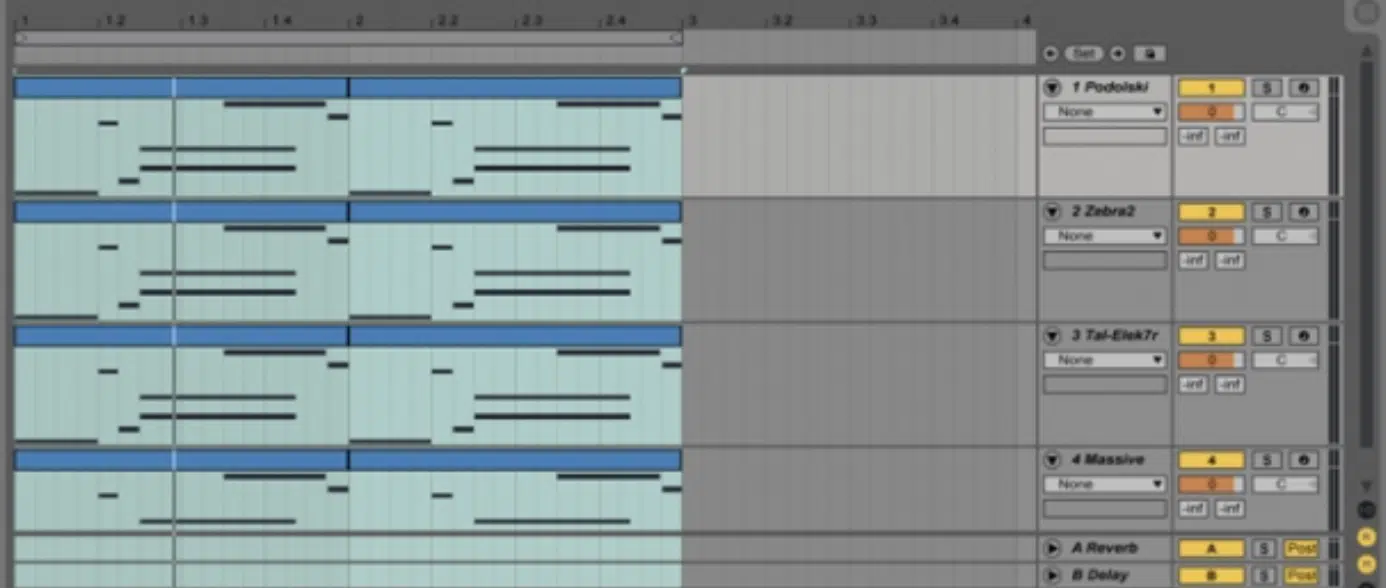
Layering Synths
When working with synths or other virtual instruments, creating Ionian scale-based melodies can help give your sound design a more harmonious, non-basic feel.
For example, in the key of C, you could layer a lead synth melody based on the notes C-D-E, then harmonize it with a pad playing B-C-D-E underneath.
Try using octaves to add more depth; play the same melody an octave higher to enhance its presence in the mix.
For a more complex texture, you can automate filter sweeps on each of the notes of the Ionian scale 一 emphasizing the root note/starting note for more impact.
This technique allows you to use the simplicity of the Ionian mode to create intricate soundscapes that still sound cohesive (this is true with all the scales).
Ionian Scale: Final Thoughts
The Ionian scale, as you now know, is the foundation of the major scale and holds a critical role in shaping melodies and harmonies.
It has the ability to create bright, uplifting progressions and rich chords.
Now, using the knowledge and techniques from today’s article, you’ll be able to lay down smooth, memorable melodies and build stronger harmonic structures.
Plus, easily transition between different modes and enhance your overall sound design like a true professional.
To help you take this even further, you’ve got to check out the Unison Ionian (Natural Major) Advanced Scales MIDI Collection.
It contains over 1,100 expertly layed down MIDI scales, chords, progressions, and melodies that are designed to help your music stand out.
Whether you’re working on guitar tracks, synth leads, or layering pads, this collection provides proven note patterns used by top producers.
With its versatile range, you’ll be able to quickly drag & drop Ionian scale progressions and tweak them to fit your unique sound (saving you hours of work).
With everything you’ve learned today, you’re now equipped to fully use the Ionian scale in your tracks all day long.
Your melodies will flow naturally, your harmonies will be more hypnotic, and your tracks will always stand out 一 so get to it!
Until next time…







Leave a Reply
You must belogged in to post a comment.